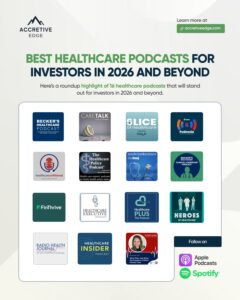Smart teams put time into webinars, analyst mentions, and white papers. But when it comes to LinkedIn strategy, the plan is often: post a link and hope someone clicks. That doesn’t work. Not at the level needed to shape buyer perception, build trust, or boost real pipeline.
LinkedIn isn’t just a brand channel, it’s a buyer education engine. But only if you use it right.
This piece breaks down what we’ve seen work across dozens of digital health GTM efforts — and how you can apply those lessons without spending months on content development or six figures on ads.
Why LinkedIn Works Differently in Healthcare
Buying Behavior Is Complex — and Content Influence Follows Suit
Selling into health systems isn’t linear. You’re not just pitching one buyer, you’re navigating a matrix: the Chief Medical Officer wants clinical outcomes, the CFO wants cost impact, and the CNO is dealing with workflow fatigue. Even if you’ve nailed your pitch, it takes time, trust, and cross-functional buy-in.
That’s why LinkedIn matters. It’s where those stakeholders go to learn — passively, quietly, and early. If your content isn’t showing up, you risk being invisible.
Most Healthcare Content Is Playing It Safe — and Getting Ignored
We still see too much content that’s built like this:
- “Join our upcoming webinar on value-based care!”
- “Excited to share our new white paper on patient engagement.”
- “Proud to be named a top innovator!”
These might feel necessary, but they rarely drive the kind of engagement that moves a buyer closer to trust. Lots of “what,” not enough “why.” What buyers engage with instead are posts that feel grounded in real work:
- What you’ve learned from failed pilot attempts
- A shift in pricing strategy that unlocked CFO alignment
- Behind-the-scenes of navigating an EHR integration
- A breakdown of how one health system actually made a procurement decision
This is a gap most companies aren’t filling, and a chance for you to stand out by telling the truth.
What works organically — when you have no ad budget
LinkedIn can absolutely work without paid spend. But not if you’re only using a company page. In healthcare, organic traction comes from real people telling real stories, not just polished promos from the marketing team.
Here’s what we’ve seen move the needle, even without a budget.
1. Prioritize Executive Voices — Especially Clinical and Commercial Leads
In healthcare, people don’t buy from brands. They buy from people they trust. That trust often starts with the face of the company: the founder, the Chief Medical Officer, or the Head of Commercial Strategy.
Some digital health companies could have a single LinkedIn post from the CMO drive more qualified traffic than a full email campaign. That’s because it sounds less like marketing and more like someone who’s lived the clinical pain and built something to fix it.
If you’re not sure what to post, here are some ideas you could start with:
- “One thing we got wrong early on about clinical workflows — and how we fixed it”
- “How we learned our buyer wasn’t who we thought it was”
- “The difference between being clinically useful and commercially viable”
These aren’t flashy, but could help build credibility fast when done right. Here are examples of LinkedIn content from Andy Strunk, CEO of Accretive Edge.
2. Use Carousels, Not Links
Link posts are still the default, but they underperform. Data shows that multi-image carousels and native PDFs (posted as “documents”) get significantly more reach and engagement. That’s especially true in healthcare, where buyers are more likely to skim on-platform than click out.
Think of carousels as the new slide deck:
- Explain your framework for buyer alignment
- Break down a pricing strategy shift
- Compare what failed vs. what worked in a health system pilot
If your post teaches something in 60 seconds or less — without making the user leave the platform — it may perform better. And the right people may start paying attention.
3. Be Specific, Not Polished
Healthcare buyers don’t need more “thought leadership.” They need proof you understand how their world works.
The best-performing organic content out there isn’t broad commentary on “healthcare innovation.” It’s focused, practical, and grounded in reality:
- What actually happened when you tried to sell to a health system CIO
- How you structured your first shared-savings agreement (break down the numbers)
- What changed when you moved from a per-seat model to flat-fee pricing (explain with data)
You don’t need perfect graphics or brand polish. You just need useful insight that helps someone avoid a mistake you already made.
4. Post With Intent
Healthcare isn’t a high-frequency content space. You don’t need to post daily to stay visible. In fact, most buyers may tune you out if they sense filler content.
We typically advise digital health teams to aim for 5-10 meaningful posts per month from key execs, and to treat each one as a crafted message:
- What’s the insight?
- Who’s the buyer it’s for?
- Why would they care?
This forces discipline, and it’s what keeps your content from becoming noise.
5. Constantly Grow Your Network
Even the best content won’t land if no one sees it. That’s why growing the right network is just as important as what you post.
In healthcare, your buyers aren’t always vocal. Many watch quietly. So if your exec team only connects with people they already know, they may miss the broader decision-making circles that matter.
We recommend this as a weekly to monthly habit:
- After every conference, webinar, or sales conversation, connect with 10–20 people you met or were in the room.
- Look at who’s engaging with your best posts — and connect with them directly.
- Use filters to find and connect with job titles that match your target buyer profiles.
You’re not doing this to pitch, but to stay visible. So that when your content hits, it lands in the right feed. The more relevant people in your network, the less you’re shouting into the void — and the more LinkedIn works the way it should.
When and How to Use Paid — Without Wasting Budget
Paid LinkedIn is not blasting your brand. It’s getting your strongest message in front of your exact buyers — repeatedly — in a way that builds trust and accelerates consideration.
Here’s how we recommend approaching it.
1. Start With Thought Leader Ads
Thought Leader Ads are one of LinkedIn’s most effective (and underused) tools. They let you sponsor a post from an individual’s profile, not your company page. That means a post from your CMO, Head of Product, or CEO can show up in front of hundreds of healthcare leaders — even if they don’t follow you.
It works because it looks like content, not an ad. And in healthcare, that matters.
Use it to:
- Amplify a CMO’s post about reducing clinical documentation time
- Share a Head of Ops story on navigating IT review hurdles
- Push a co-founder’s breakdown of risk-based pricing strategy
If the post already performed well organically, sponsor it to reach the people who matter most: hospital execs, revenue leaders, and clinical operators in your target accounts.
It’s a fast way we’ve seen to turn one strong post into 10x the visibility, without burning credibility.
2. Use Small Budgets to Learn Fast
You don’t need a massive paid media plan to start. You could begin with $1,500–$3,000 per month to test:
- Who actually engages (e.g., CMIOs vs. clinical ops managers)
- What messages resonate (e.g., pricing vs. workflow vs. staffing)
- What formats convert (e.g., Thought Leader Ads vs. lead gen forms)
The key is to treat early spend as a learning engine. Run A/B tests, swap creative quickly, and measure what drives actual engagement, not just impressions.
Then double down on what works. If a CMO post outperforms branded content by 5x (which happens), shift more budget there. If a carousel is driving demo requests while a whitepaper ad flops, adjust accordingly.
3. Target by Title, Not Industry
Many teams default to targeting healthcare “industry” or “job function.” That’s too vague. To land in the right feeds, you need to get closer to actual buyer roles.
You could try this:
- Target “Director of Clinical Operations” in acute care
- Layer in “Chief Nursing Officer” or “Clinical Informatics Lead” for a workflow tool
- Go after “Revenue Cycle Director” or “Finance VP” if your solution ties to reimbursement
LinkedIn lets you target by job title, seniority, company size, and even specific health systems. Use that precision to get hyper-specific. A few hundred of the right views are more valuable than 10,000 from the wrong audience.
4. Don’t Push Demos Too Early
One of the fastest ways to waste paid budget in healthcare is to run ads that say:
“See a demo.” “Book a call.” “Talk to sales.”
Most healthcare buyers aren’t ready for that step. They’re in learn mode, especially at the beginning of a sales cycle.
Instead, use paid to warm them up:
- “How one system reduced time-to-contract by 30%”
- “3 things we got wrong when selling into our first health system — and what changed”
- “Why flat-fee pricing helped us finally get CFO buy-in”
Once you’ve earned attention and trust, you can introduce lower-funnel offers, like demo CTAs or downloadable proof decks.
The point of paid isn’t just to generate leads. It’s to build buyer readiness so that when the conversation starts, they already know who you are and why it matters.
What a Smart LinkedIn Strategy Looks Like in Digital Health
1. Match the Message to the Buyer
A health system CIO cares about integration. A CMIO cares about workflow. A CFO cares about margin and risk.
You can’t run one generic message and expect it to work across all three.
A smart LinkedIn strategy separates messaging by buyer type and buying stage:
- Early: “What we’ve learned about solving clinical documentation friction” → for CMIOs
- Mid-funnel: “How one client aligned IT, finance, and ops on procurement” → for CIOs
- Late-stage: “What shared-savings pricing actually looks like in a health system contract” → for CFOs and finance leads
Each message should speak to the real friction points your buyer faces. That’s what earns attention — and builds relevance.
2. Share the Message From the Right Mouth
Credibility matters, especially in healthcare.
A carousel about workflow efficiency will land differently coming from your Head of Clinical Ops than from your Head of Growth. A post about EHR integration lands better when it’s from your CTO, not a content marketer.
Buyers want to hear from people who’ve sat in the seat — or solved the problem firsthand. That’s why executive voices outperform brand accounts.
We recommend mapping message-to-messenger like this:
| Message Topic | Best Messenger |
| Clinical outcomes | Chief Medical Officer |
| Workflow alignment | Head of Clinical Ops |
| Budget and ROI | VP of Commercial, CFO, or CEO |
| Integration / EHR fit | CTO or Product Lead |
The right voice makes the same message more believable.
3. Let Organic Prove the Message — Then Amplify With Paid
You don’t have to guess what content will work. Test it organically.
- Post a carousel from your CMO breaking down an onboarding lesson
- Share a PDF from your Product Lead explaining a tricky integration
- Publish a short story from your CEO about a pricing misstep you corrected
Then watch what hits:
- Are hospital buyers engaging?
- Are commercial leaders from health systems viewing or commenting?
- Are your sales reps hearing about it in live calls?
If the post gains traction, sponsor it using Thought Leader Ads. That’s how you turn one moment of relevance into sustained visibility with your target audience — without rebuilding creative from scratch.
4. Measure the Right Outcomes
Vanity metrics — impressions, clicks, followers — don’t help you close deals. In healthcare, LinkedIn success looks different.
Here’s what to actually track:
- Engagement from target accounts: Are the right buyers viewing, liking, or sharing?
- Sales lift: Are reps reporting warmer intros or faster recognition in outreach?
- Deal acceleration: Are active buyers referencing your content during diligence?
LinkedIn could shorten your sales cycle if used right as it reduces friction. Buyers come in warmer, with more context, and fewer doubts.
LinkedIn Works in Healthcare — if You Work It Right
Your buyers are on LinkedIn scanning for answers. They want to know what’s working, how peers are solving the same problems, and who they can trust to help them make a better decision.
If your team shows up consistently with relevant, honest content — and uses paid to stay in the feed during long buying cycles — you’ll build confidence. And in healthcare, that’s what moves deals forward.






